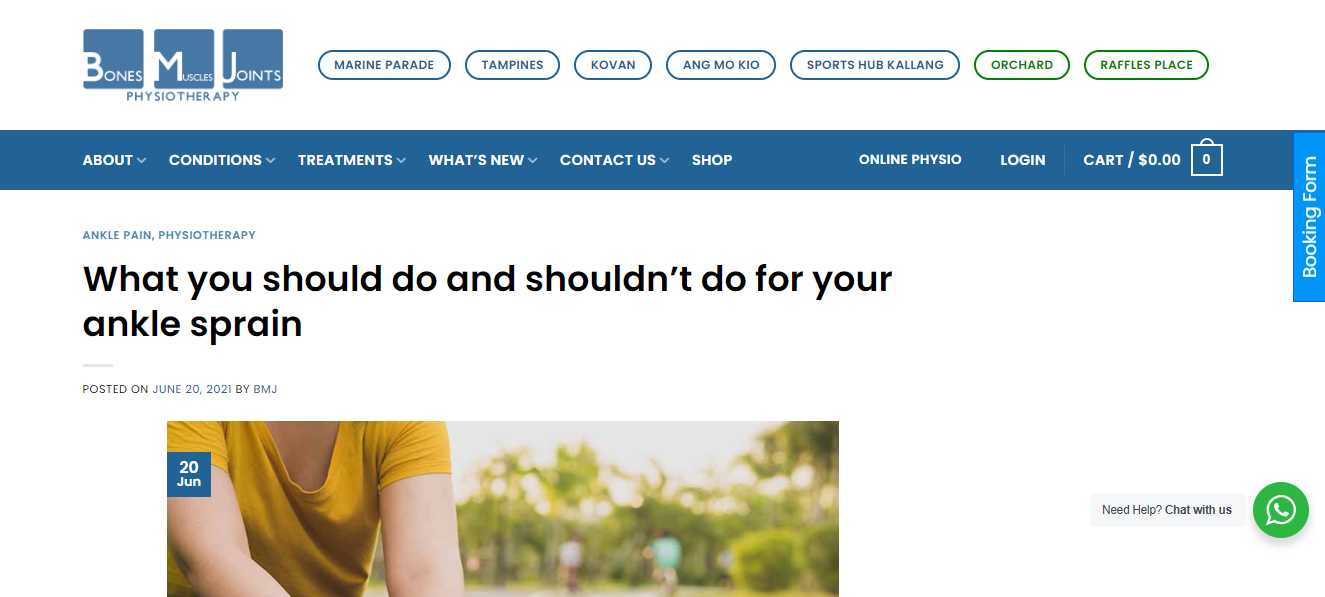
Ankle sprain know The dos and don'ts. Use this guide to avoid worsening your ankle sprain and having it recover as soon as possible.
Maybe bad luck has touched your ankle, and you've sustained an ankle sprain. Don't worry; it's not doomsday, and you don't need to rush to the emergency department just yet! Ankle sprains are a common injury, and while they can be painful and frustrating, proper care and knowledge can make all the difference in your recovery. In this guide, we'll explore what you should and shouldn't do for your ankle sprain to ensure a speedy and successful recovery.
Understanding Ankle Sprains:
Before we dive into the dos and don'ts, let's briefly understand what an ankle sprain is. An ankle sprain occurs when the ligaments that support your ankle stretch or tear due to sudden twisting or rolling of the foot. This can result in pain, swelling, bruising, and difficulty walking. Now, let's address the burning questions many people have:
Can You Walk on a Sprained Ankle?
Yes, Can walking on a sprained ankle make it worse, but it's crucial to exercise caution. Attempting to walk with a severe sprain can worsen the injury and delay the healing process. If you can bear weight on your injured ankle with minimal pain, you can use crutches or a brace for support. However, if walking causes significant discomfort, it's best to avoid putting weight on it until you've consulted a healthcare professional.
Can Walking on a Sprained Ankle Make It Worse?
Can walking on a sprained ankle make it worse, especially if the injury is severe. Putting weight on a sprained ankle too soon can further damage the already stretched or torn ligaments and increase swelling. It's essential to follow the R.I.C.E. (Rest, Ice, Compression, Elevation) protocol in the initial stages and seek professional guidance on when it's safe to start walking on your sprained ankle.
The Dos and Don'ts of Ankle Sprain Care:
Do Rest: Give your ankle the rest it needs to heal. Avoid putting unnecessary stress on it, and use crutches if necessary.
Do Ice: Apply ice to the affected area for 15-20 minutes every few hours during the first 48 hours to reduce swelling and pain.
Do Compress: Use an elastic bandage to wrap your ankle gently. Compression helps control swelling, but don't wrap it too tightly.
Do Elevate: Keep your ankle elevated above heart level whenever possible to reduce swelling.
Don't Ignore Pain: If pain persists or worsens, consult a healthcare professional immediately.
Don't Skip Rehabilitation: Once the initial pain and swelling subside, consult a physical therapist for rehabilitation exercises to strengthen your ankle and prevent future injuries.
Don't Rush Back to Activities: Give your ankle ample time to heal before resuming sports or strenuous activities.
For more detailed information and personalized guidance on ankle sprain care, visit us at https://bmjtherapy.com/do-and-do-not-ankle-sprain/.
Conclusion:
Ankle sprains can be a setback, but with the right approach, you can recover and regain your mobility. Remember that each sprain is unique, so it's essential to listen to your body and seek professional advice when needed. By following the dos and don'ts outlined in this guide, you can avoid worsening your ankle sprain and pave the way for a swift and successful recovery.
If you have any questions or need further assistance, feel free to reach out to us at info@bmjtherapy.com or connect with us on social media: Facebook and Instagram. Your journey to a healthier, pain-free ankle starts here.
EMAIL:info@bmjtherapy.com
https://www.facebook.com/BMJTHERAPY/
https://www.instagram.com/bmjphysiotherapy/Can walking on a sprained ankle make it worse

0 Comments